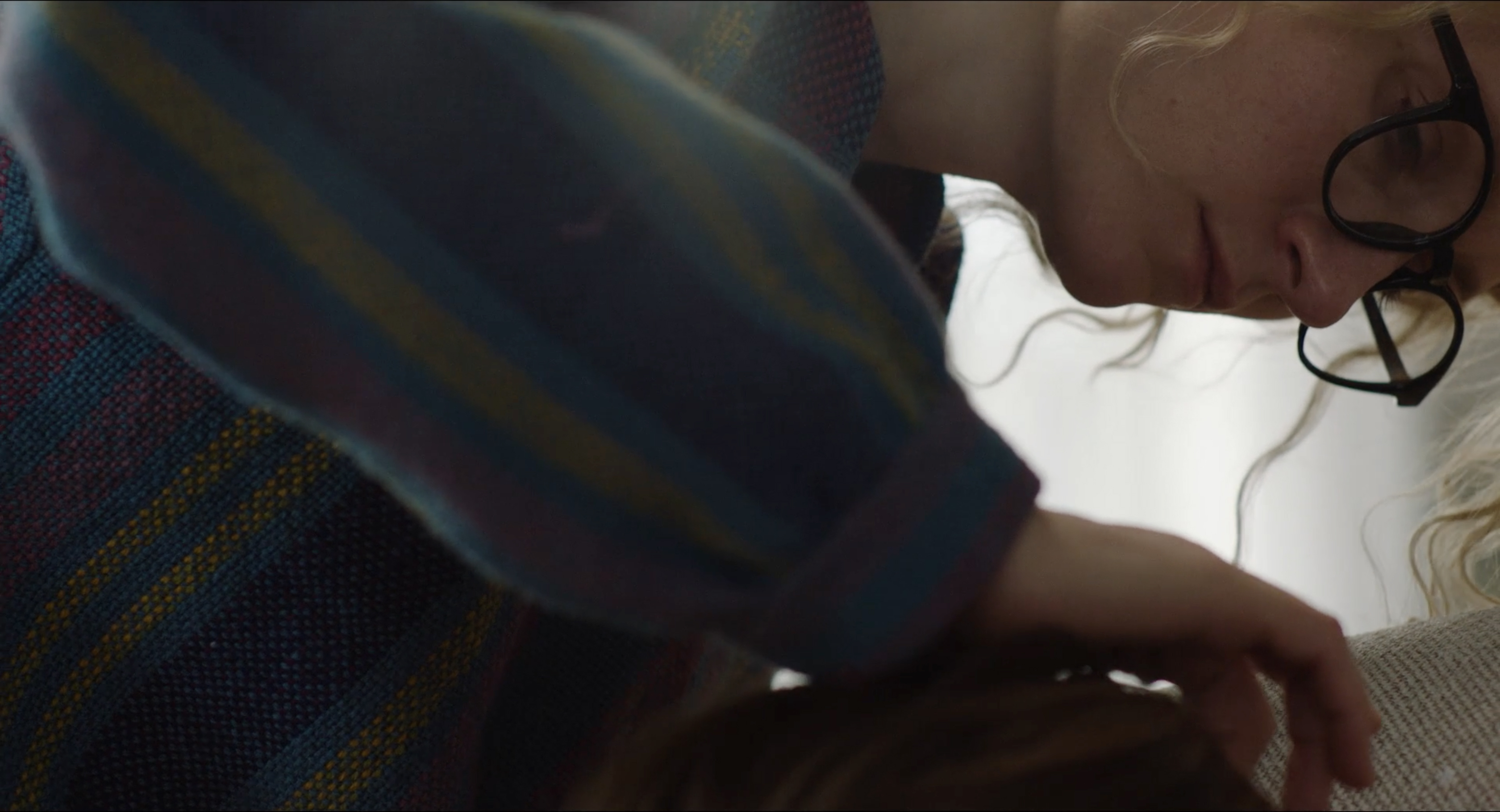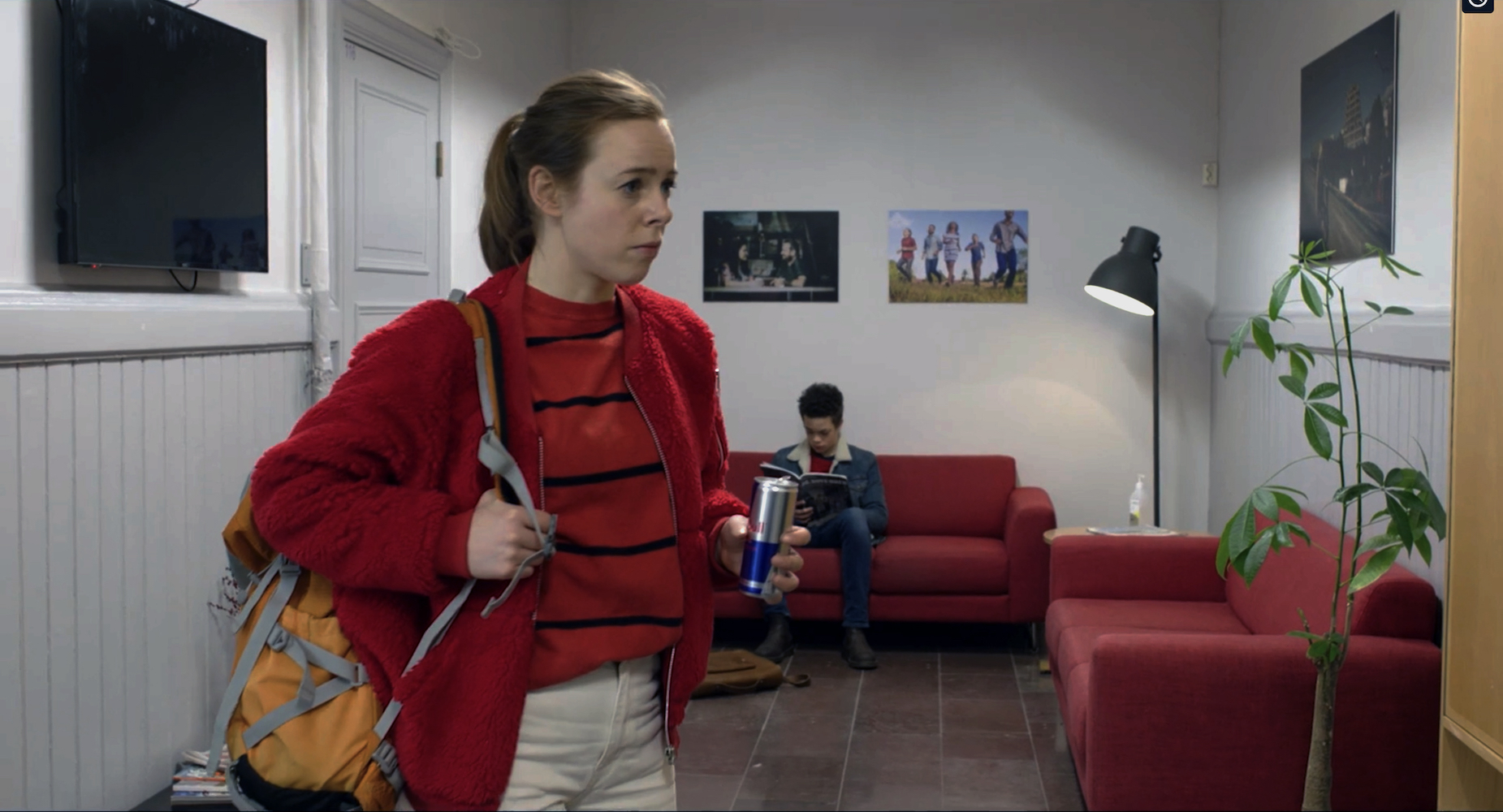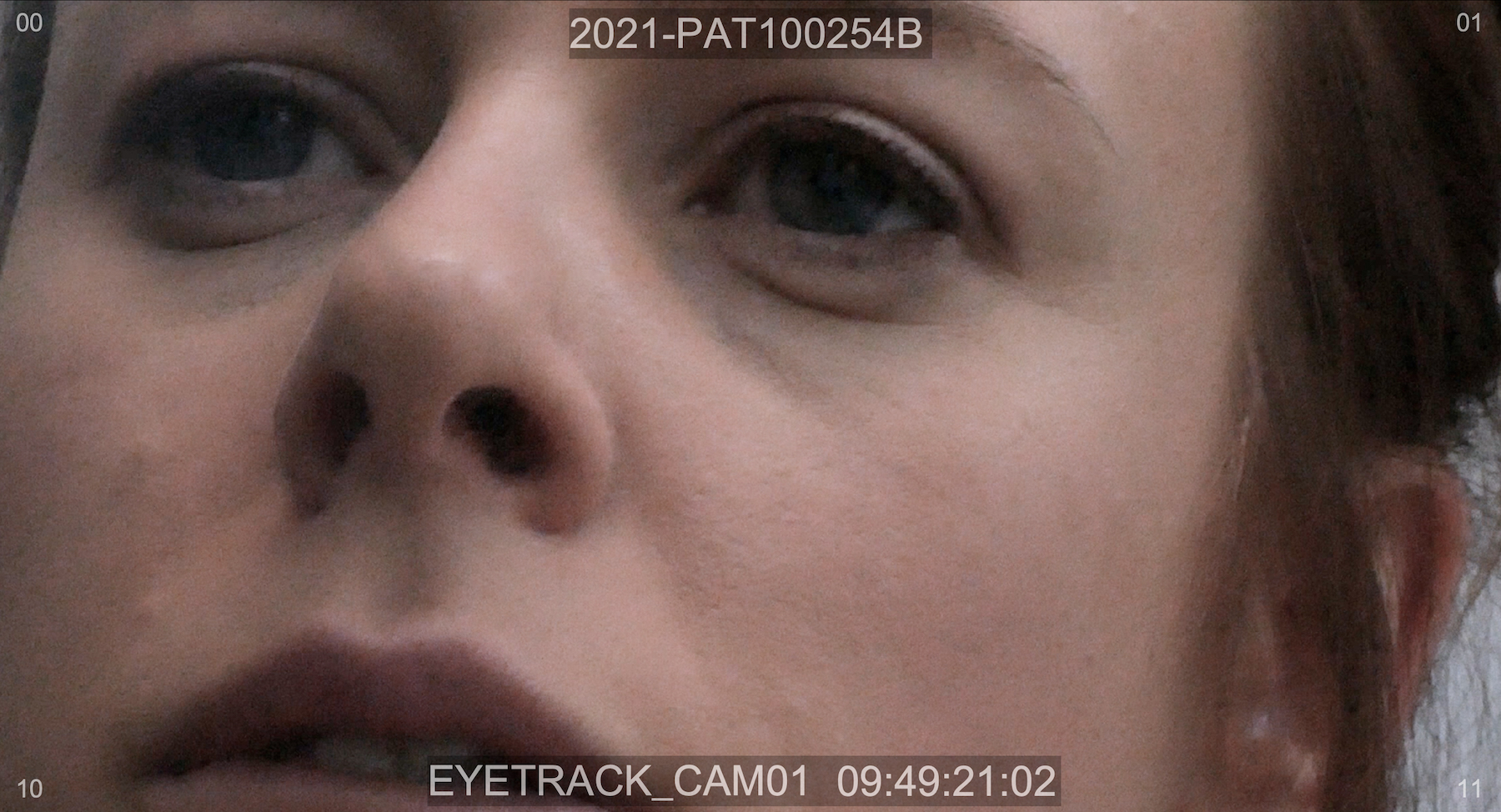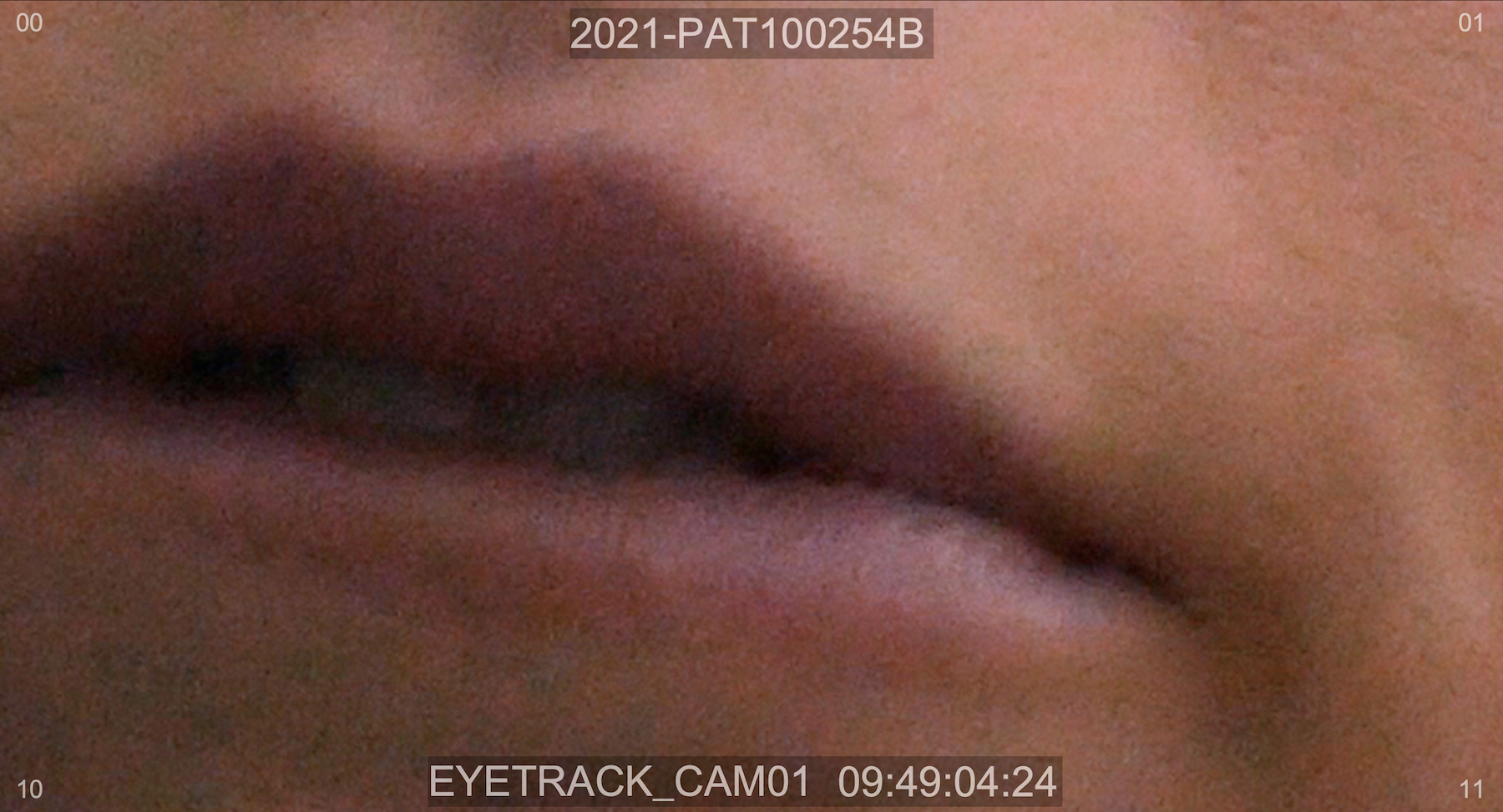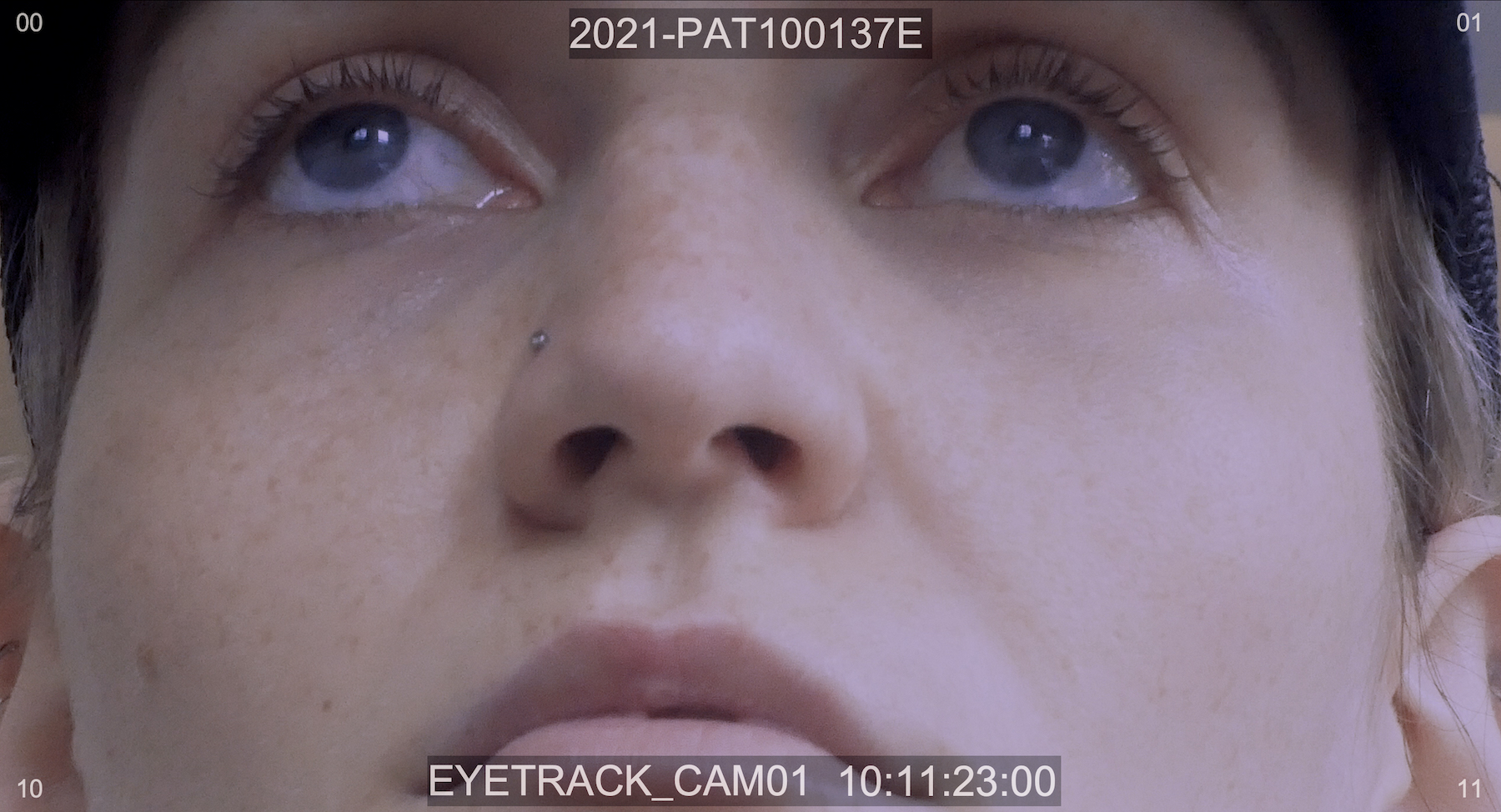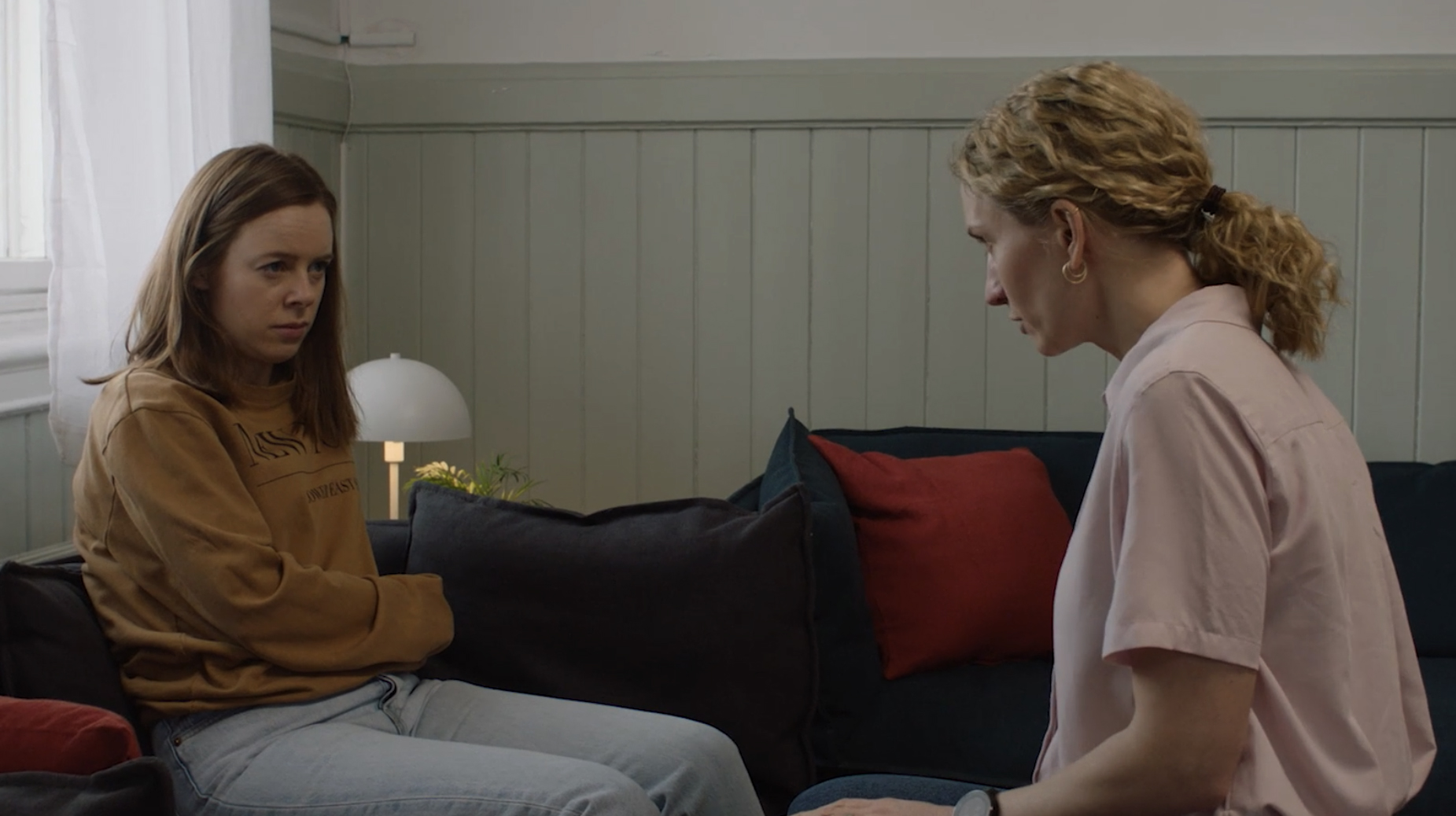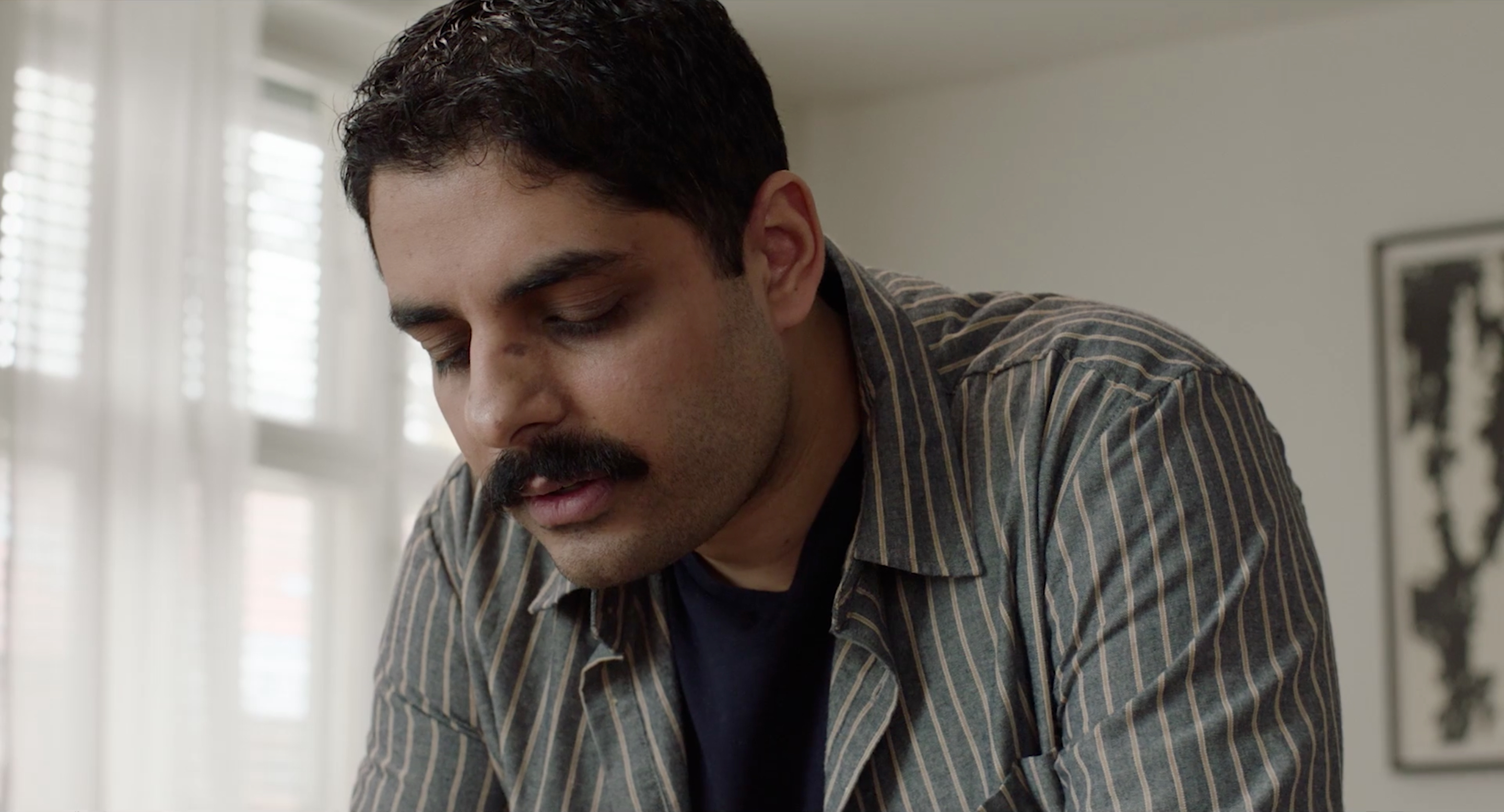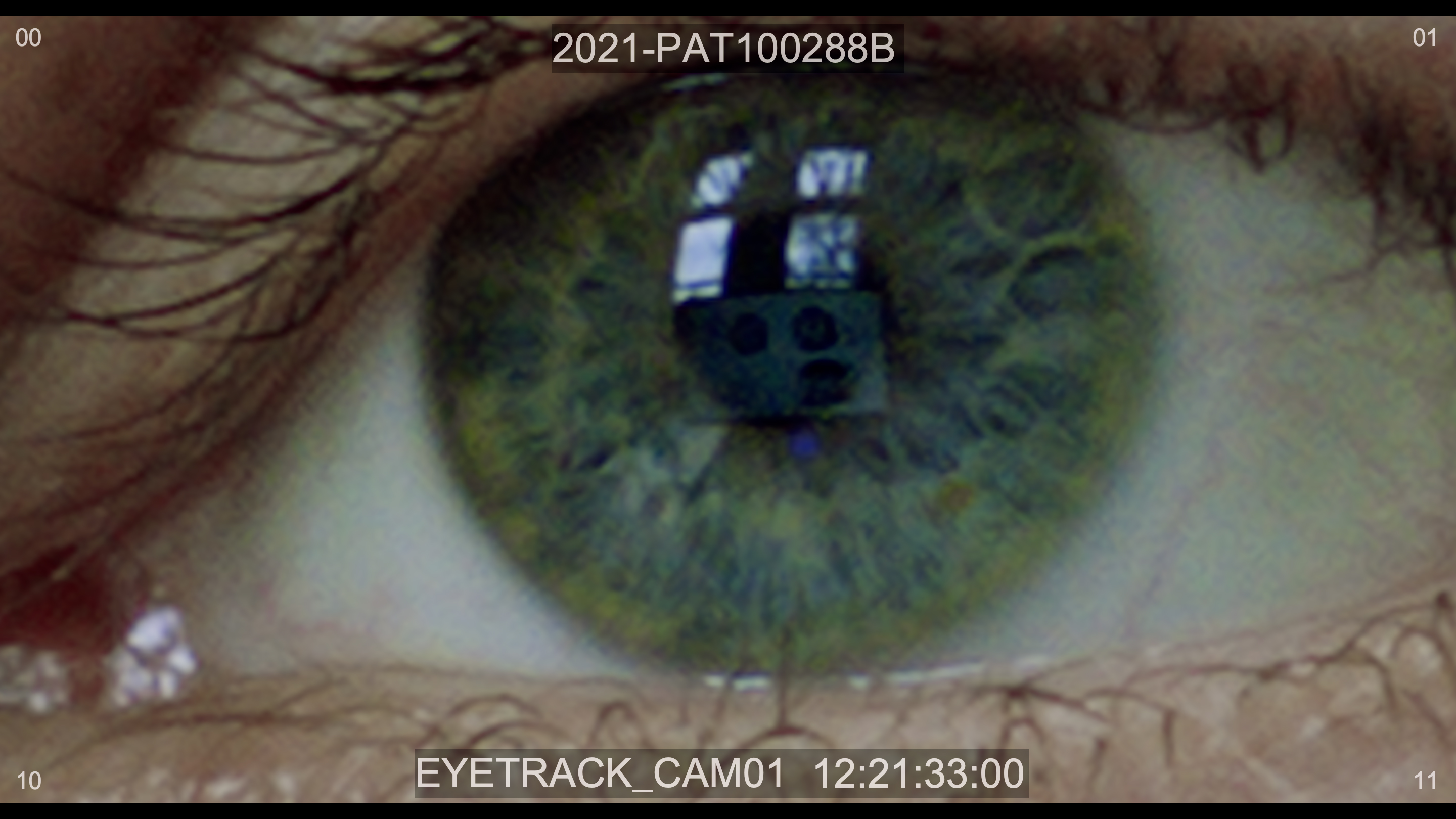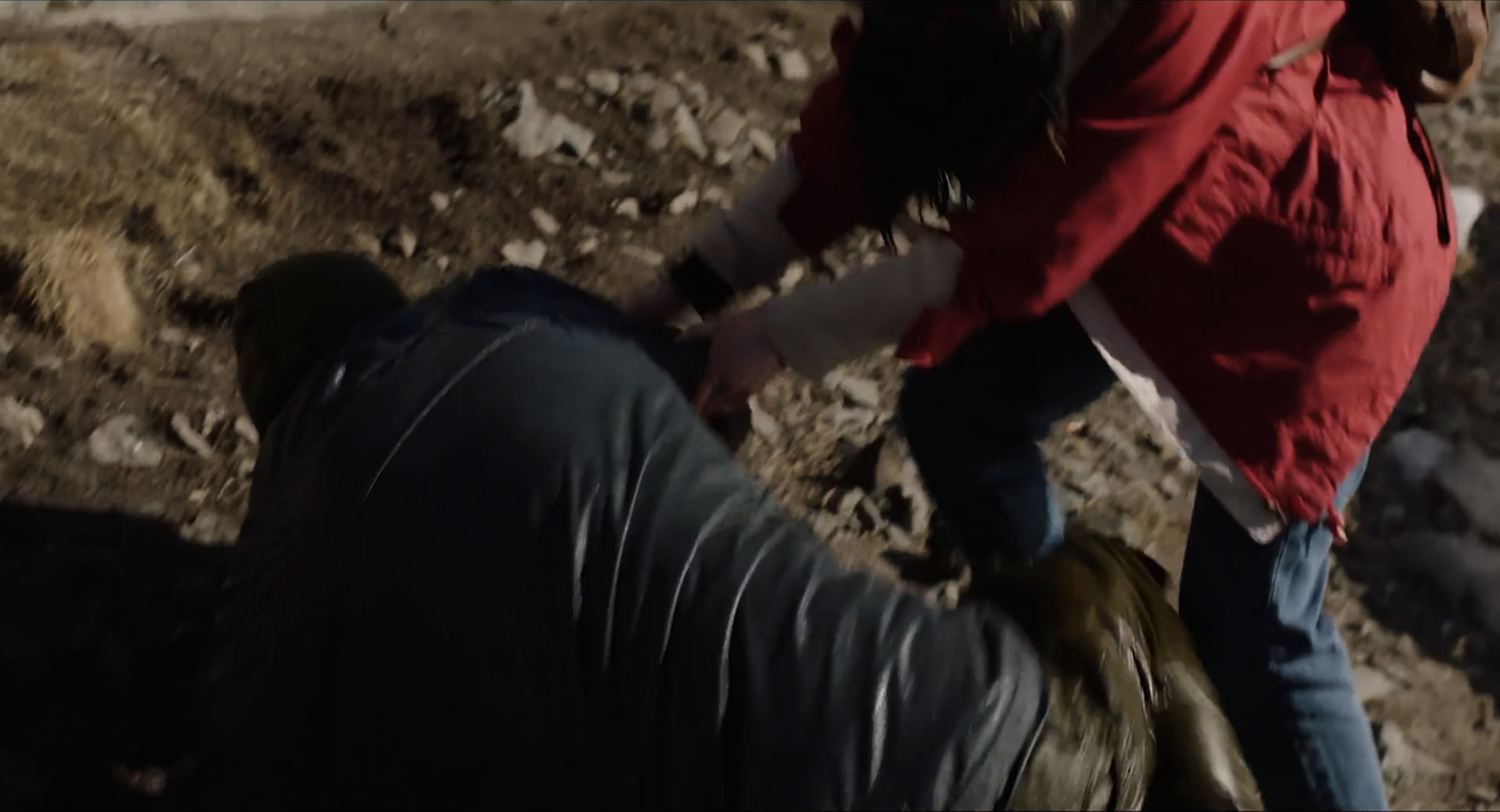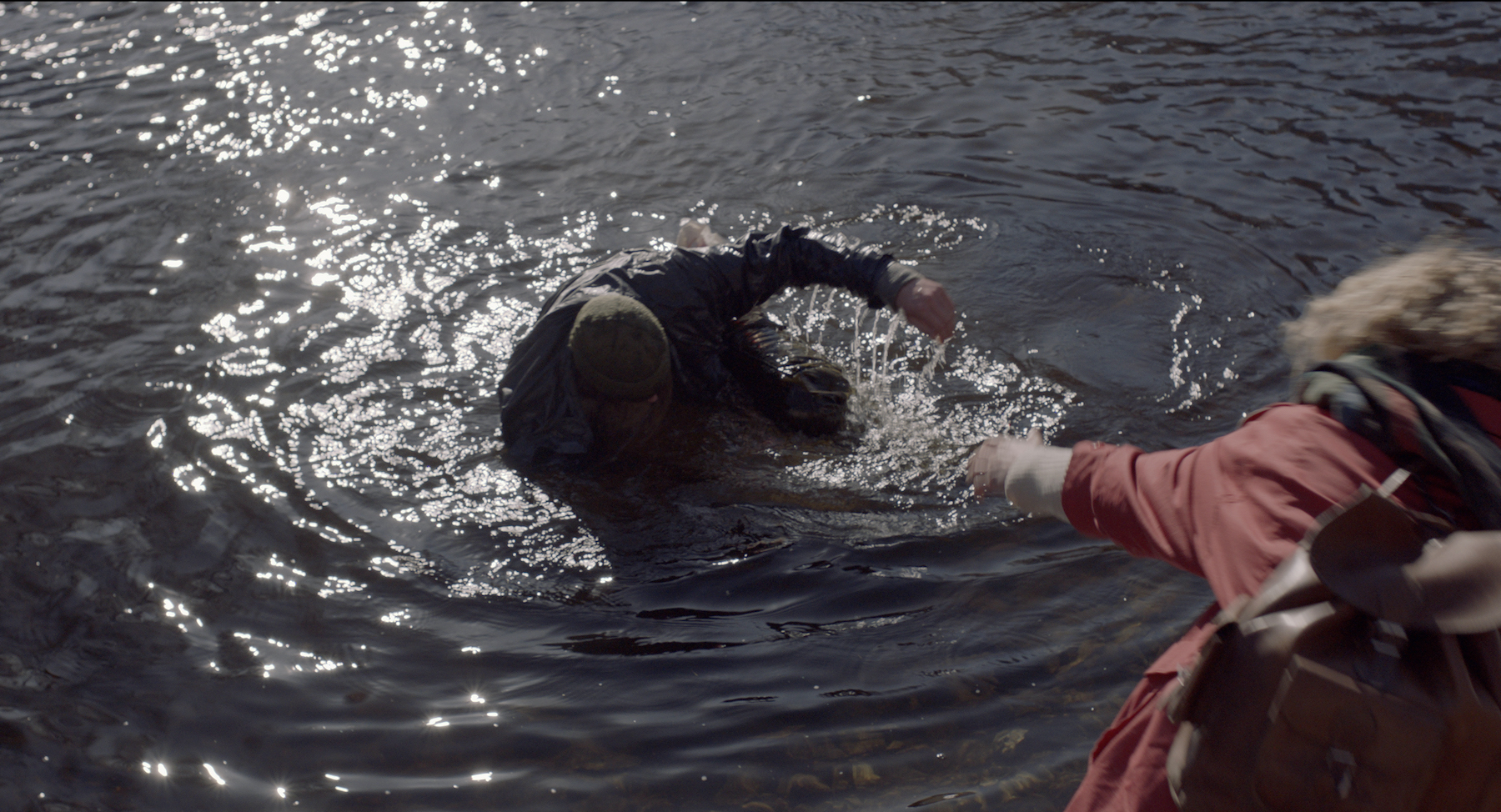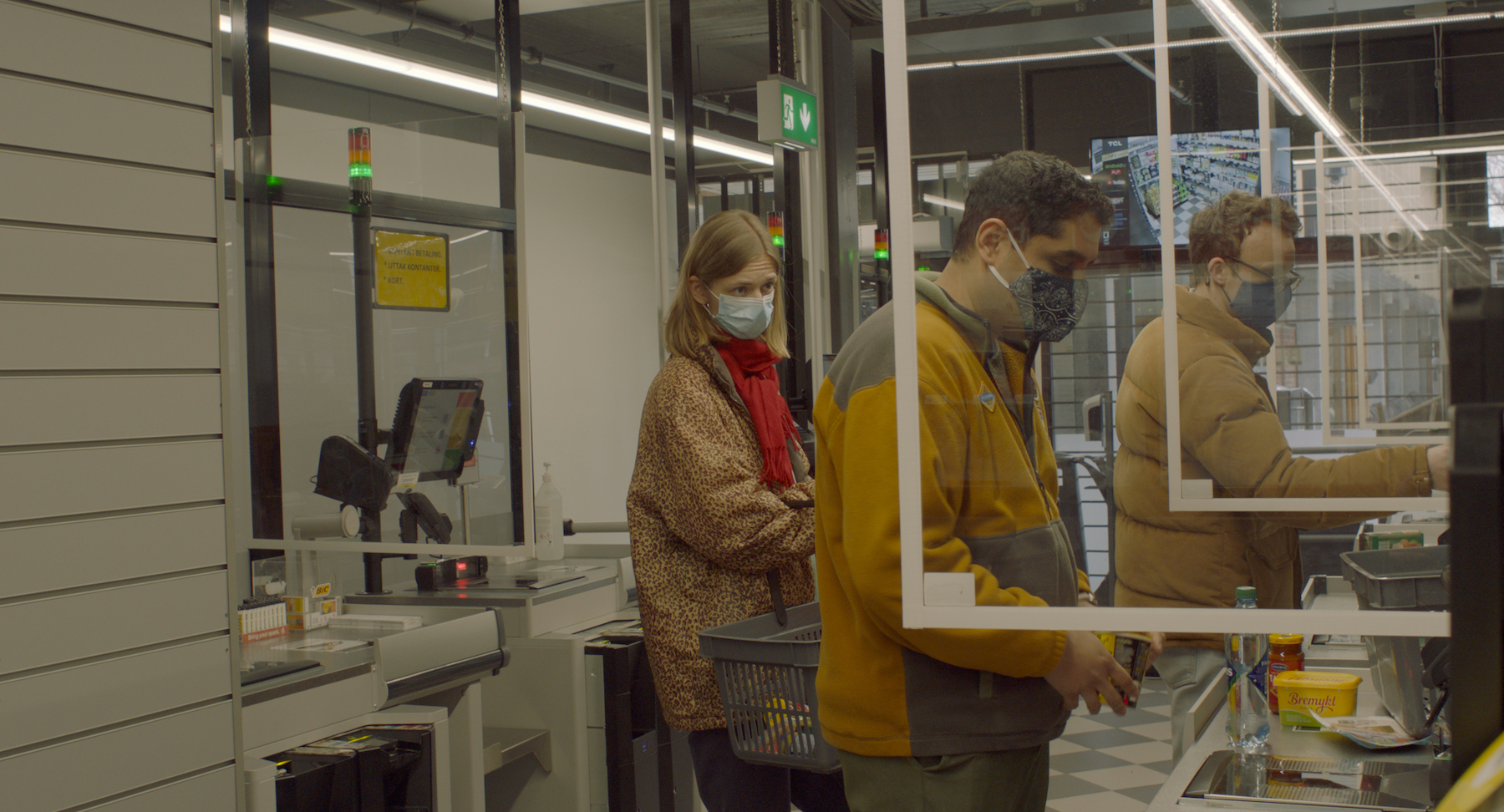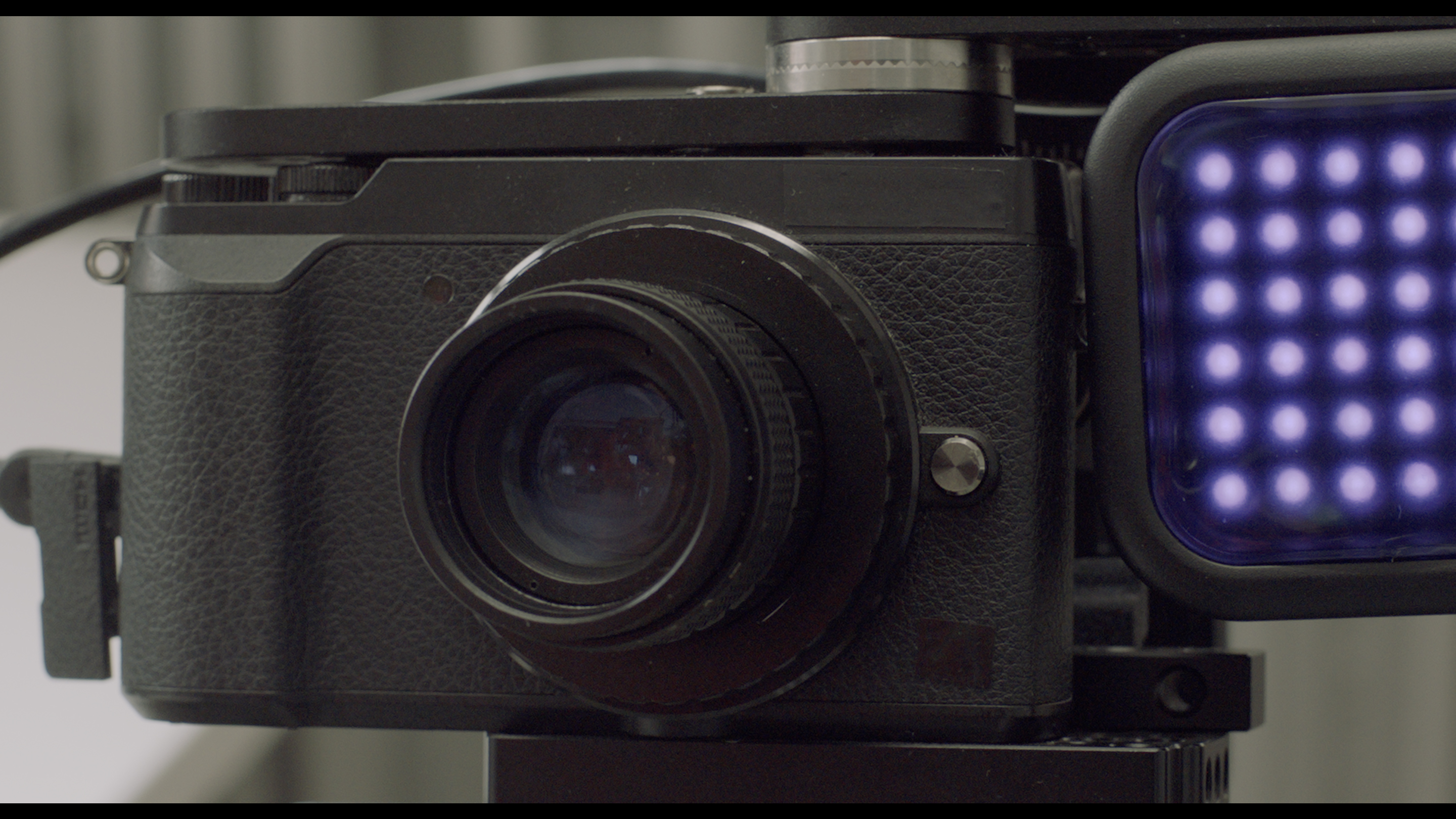Oslo 2; Speech
ARRIRAW, 30 min, colour, surround sound. 2021
With Birgitte Larsen, Kjersti Dalseide, Manish Sharma, Håkon Mathias Vassvik, Vanja Maria Kern Vestenfor, Knut Åsdam.
DOP Marte Vold
Speech is chapter 2, Speech, of the overarching film project: Oslo; Work, Speech, Living, Sexualities, Struggle 2019-2024. A five year film and art installation project using Oslo as its source material, in order to talk about subjectivity today. In 2024/2025 it is assembled into a feature film.
Already produced as of 2021: Oslo1; Work, 2019 and Oslo 2, Speech, 2020-2021.
This project was begun as part of the Oslo biennial, but is now independent and produced by Oblique Institute and distributed by Filmbyrået Jack
Speech
In Speech, deviation is thematically and structurally embedded. The film is mainly set in a speech pathology clinic, we meet a small group of language pathologists and the persons that come for treatment. The main characters in this dynamic, X and M, one a pathologist and one a "patient" end up on two sides of a communicative barrier where the power relations are unsure. X desires every day speech and communication outside of the clinic, and M - who in one way has language difficulties, frustrates Xs attempts at leading the treatment through her questioning and use of language, and she distrupts and turns on the situation of the treatment at every chance - while still coming in for treatment. M gains power from the powerplay at stake in her own treatment rather than her linguisitc skills that she is there to improve. X's professional understanding of people and place is greatly influenced by working in a “boundary zone” of comprehension, understanding and linguistic deviancy, but since it is her professional life, it also estranges her from the lingusitic play of everyday life of people.
Thematically, it is about deisre for functional language, but also with coping with unusual language in a language-obsessed and skills-oriented society. Unusual in this case, means to not be able to speak the dominant language of their society with authority. In this film, it relates to speech difficulties often associated with learning difficulties, that of depressed speech, or of people desperately seeking affirmation through any sort of language. The effects might sometimes be subtle and not apparent in all situations, but there is often something “wrong” with the syntax but also a very creative use of signifiers to circumvent the difficulties in creating a straight-forward sentence. This is a position that is necessarily creative and affirmative in its way of dealing with the world. Like the different topics of “broken” and/or infused language, this creates language with great local precision as it is understood by and tailored to the people close to one, but that might struggle with access to social or economic positions in society—or simply to be understood.
Working with this as a theme, also allows for a formal investigation into utterance, slang, inflection and association. Sentences that are "off" in structure will dominate. Linguistic non-conformity will be prominent in the film. Naturally, this also allows me to work critically and creatively in relation to film conventions to do with language. Like with casting or narratology, language in film has become increasingly standardized in the forms that are considered workable and realistic and even “neutral” and dramatically functional. However, like everything else within the medium, it is, of course, totally constructed and institutionalized. In removing the hesitations, faulty sentences, incomplete sentences that are fulfilled by association, or the over-elaborate or repetitive languages of every-day life, one also removes important markers of the creative and necessary struggle with language that we engage with. With this, one also removes important announcements of subjectivity, the body and lived experience that belong to our times. I have a long-standing interest for the psychology of language as well as that of the usage and creativity slang and struggles of language, and in this film these issues will come to the forefront again. The film will involve language on the levels of body- and context- along with verbal language. Film is obviously particularly suitable for this type of theme because of the ability to create narrative through image, sound, movement, body representation and language.
Work, Speech, LIving, Sexualities, Struggle.
Hybrid work, public film project and feature film:
Each year I shoot material for one thematic chapter linked to a critical part of contemporary life. The resulting footage resulst in an independent film of between 30 and 60 min. This chapter-film is then incorporated into the final long film at the end of the 5 years. Each year, I also create short clips of the new chapter material and show the clips in public sites in Oslo. That multi-site public work runs over 6 weeks and changes scenes and clips each week. which of 2-3 minutes each linked to a critical part of contemporary life in Oslo/Norway.
Formally:
The primary formal approach the work will adapt is close to an extreme version of trans-realism: Using and documenting real societies of today and using found stories and narratives rather than constructing them from scratch, but allowing literary freedom and psychological responses to that world to be portrayed to the degree of becoming surreal.
Secondly, the approach amounts to a sort of contemporary history painting. It does not depict war or key political decisions, but rather, it painstakingly tries to describe a society at a crucial and specific time in history - socially and politically. This film will mix real sites and stories with constructed views and situations.
This non-orthodox approach to documentation in storytelling opens up for cinematic exploration and creativity. It also represents better the way we relate to the world, which is never without disruptions, editing or desire mixed into our understanding of our situation and environment.
Expanded cinema:
The work will function as expanded cinema - in that it pushes cinema into other, less controllable audiences and viewing situations. This is something that has been my concern since my video installations in public spaces from the early 90s upward through to the Mobile Egress mobile cinema of 2015-2017. To me it is most interesting to continue to work with different audience and viewer situations. This can also include cinema and museum situations but not prioritise one audience over another, and continuously seek to shift from one context of reception to another.
DOP Marte Vold
Speech is chapter 2, Speech, of the overarching film project: Oslo; Work, Speech, Living, Sexualities, Struggle 2019-2024. A five year film and art installation project using Oslo as its source material, in order to talk about subjectivity today. In 2024/2025 it is assembled into a feature film.
Already produced as of 2021: Oslo1; Work, 2019 and Oslo 2, Speech, 2020-2021.
This project was begun as part of the Oslo biennial, but is now independent and produced by Oblique Institute and distributed by Filmbyrået Jack
Speech
In Speech, deviation is thematically and structurally embedded. The film is mainly set in a speech pathology clinic, we meet a small group of language pathologists and the persons that come for treatment. The main characters in this dynamic, X and M, one a pathologist and one a "patient" end up on two sides of a communicative barrier where the power relations are unsure. X desires every day speech and communication outside of the clinic, and M - who in one way has language difficulties, frustrates Xs attempts at leading the treatment through her questioning and use of language, and she distrupts and turns on the situation of the treatment at every chance - while still coming in for treatment. M gains power from the powerplay at stake in her own treatment rather than her linguisitc skills that she is there to improve. X's professional understanding of people and place is greatly influenced by working in a “boundary zone” of comprehension, understanding and linguistic deviancy, but since it is her professional life, it also estranges her from the lingusitic play of everyday life of people.
Thematically, it is about deisre for functional language, but also with coping with unusual language in a language-obsessed and skills-oriented society. Unusual in this case, means to not be able to speak the dominant language of their society with authority. In this film, it relates to speech difficulties often associated with learning difficulties, that of depressed speech, or of people desperately seeking affirmation through any sort of language. The effects might sometimes be subtle and not apparent in all situations, but there is often something “wrong” with the syntax but also a very creative use of signifiers to circumvent the difficulties in creating a straight-forward sentence. This is a position that is necessarily creative and affirmative in its way of dealing with the world. Like the different topics of “broken” and/or infused language, this creates language with great local precision as it is understood by and tailored to the people close to one, but that might struggle with access to social or economic positions in society—or simply to be understood.
Working with this as a theme, also allows for a formal investigation into utterance, slang, inflection and association. Sentences that are "off" in structure will dominate. Linguistic non-conformity will be prominent in the film. Naturally, this also allows me to work critically and creatively in relation to film conventions to do with language. Like with casting or narratology, language in film has become increasingly standardized in the forms that are considered workable and realistic and even “neutral” and dramatically functional. However, like everything else within the medium, it is, of course, totally constructed and institutionalized. In removing the hesitations, faulty sentences, incomplete sentences that are fulfilled by association, or the over-elaborate or repetitive languages of every-day life, one also removes important markers of the creative and necessary struggle with language that we engage with. With this, one also removes important announcements of subjectivity, the body and lived experience that belong to our times. I have a long-standing interest for the psychology of language as well as that of the usage and creativity slang and struggles of language, and in this film these issues will come to the forefront again. The film will involve language on the levels of body- and context- along with verbal language. Film is obviously particularly suitable for this type of theme because of the ability to create narrative through image, sound, movement, body representation and language.
Work, Speech, LIving, Sexualities, Struggle.
Hybrid work, public film project and feature film:
Each year I shoot material for one thematic chapter linked to a critical part of contemporary life. The resulting footage resulst in an independent film of between 30 and 60 min. This chapter-film is then incorporated into the final long film at the end of the 5 years. Each year, I also create short clips of the new chapter material and show the clips in public sites in Oslo. That multi-site public work runs over 6 weeks and changes scenes and clips each week. which of 2-3 minutes each linked to a critical part of contemporary life in Oslo/Norway.
Formally:
The primary formal approach the work will adapt is close to an extreme version of trans-realism: Using and documenting real societies of today and using found stories and narratives rather than constructing them from scratch, but allowing literary freedom and psychological responses to that world to be portrayed to the degree of becoming surreal.
Secondly, the approach amounts to a sort of contemporary history painting. It does not depict war or key political decisions, but rather, it painstakingly tries to describe a society at a crucial and specific time in history - socially and politically. This film will mix real sites and stories with constructed views and situations.
This non-orthodox approach to documentation in storytelling opens up for cinematic exploration and creativity. It also represents better the way we relate to the world, which is never without disruptions, editing or desire mixed into our understanding of our situation and environment.
Expanded cinema:
The work will function as expanded cinema - in that it pushes cinema into other, less controllable audiences and viewing situations. This is something that has been my concern since my video installations in public spaces from the early 90s upward through to the Mobile Egress mobile cinema of 2015-2017. To me it is most interesting to continue to work with different audience and viewer situations. This can also include cinema and museum situations but not prioritise one audience over another, and continuously seek to shift from one context of reception to another.
Links
